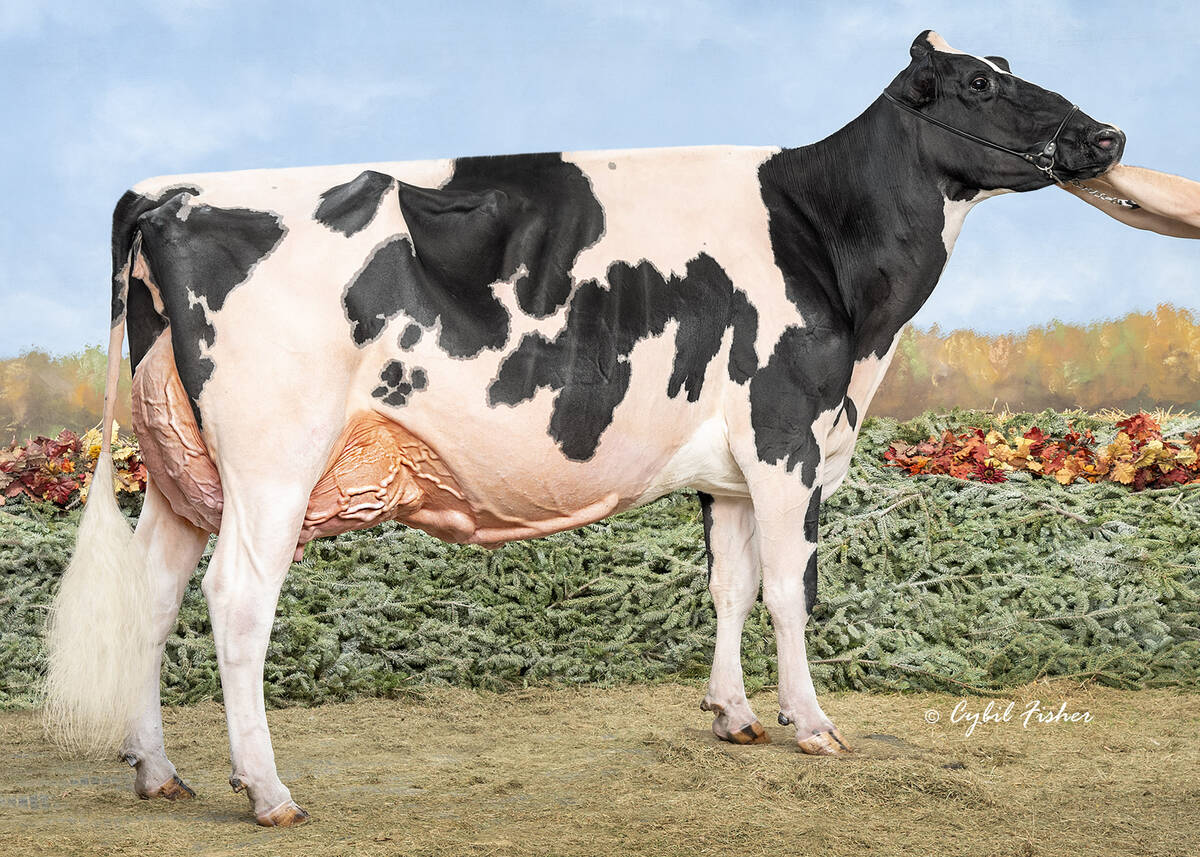Vaccines are a critical biosecurity tool on livestock farms and ranches.
The principle of raising immunity against disease is a good one, but many other factors come into play.
In Canada, vaccines must undergo rigorous testing for safety and efficacy as well as duration of immunity. Nevertheless, there is the rare possibility of an allergic reaction, so always have epinephrine on hand when vaccinating your herd.
There may be a genetic or feed component to allergic animals, which means allergic reactions often involve several animals.
Read Also

Saskatchewan dairy farm breeds international champion
A Saskatchewan bred cow made history at the 2025 World Dairy Expo in Madison, Wisconsin, when she was named grand champion in the five-year-old Holstein class.
Handle and administer the vaccines as close to the recommendations as possible to keep protection as high as possible. Freezing is an absolute no-no, but overheating should also be avoided.
Never mix more modified vaccine than you can use in one hour, and follow the proper route of administration. Syringes should be properly calibrated and one syringe dedicated to one vaccine. It is easiest to mark the syringes accordingly to avoid mix-ups if multiple vaccines are being given.
If administering two vaccines, apply on opposite sides of the neck if possible or at least apply a hand breadth apart because efficacy can be diminished if vaccines contact each other under the skin. Fragile modified vaccines such as IBR can be rendered ineffective.
Change needles as frequently as necessary.
Do not use disinfectants to clean your syringe before use or between animals because they destroy the fragile modified vaccine viruses.
Discard unused modified vaccines after use. Killed vaccines or bacterins such as blackleg can be used for a time afterward if they have been drawn out under sterile conditions and kept in the fridge.
Ask your veterinarian about the stability of the vaccines that were used and get a recommendations for storage, handling and specific protocols for the age of cattle being vaccinated.
Vaccines work best if your animals’ immune systems are functioning at peak performance. Several factors affect the immune system.
For example, proper management can control stress from overcrowding and poor nutrition. Animals with a poor body condition will not mount an immune response. Mineral and vitamin status must also be good for all the immune pathways to function.
Parasites can also affect immune response, which can be taxed as the animal tries to rid itself of the parasites.
Treating livestock to minimize parasites greatly enhances protection from vaccines.
Cattle that have high levels of coccidiosis or cryptosporidiosis also tax the immune system.
Deworming cattle will often reduce the coccidia as well.
The response to vaccines will also be lower anytime a clinical or subclinical (hidden) disease is present. Animals cannot develop protection if they are dealing with another ailment.
Avoid vaccinating in inclement weather. It is harder to handle the vaccines properly, and swellings and abscesses are more frequent.
Ideally, vaccinations should be given two to four weeks before the maximum exposure to a disease. Perfect timing is unlikely, given the need for manpower and the variability of weather, but even a few days before exposure can be protective.
There are specific genetic markers that make cattle more or less susceptible to disease conditions. This will eventually help us select cattle that develop better protection to disease. The heritable component of resistance to parasites is also strong.
However, overwhelming exposure to infective organisms may still cause disease, even if all the above precautions are taken.
The clostridia vaccines are the closest to providing complete protection, and it is rare for veterinarians to hear of cattle vaccinated with clostridials developing blackleg.
Cattle are highly susceptible to respiratory disease. A large U.S. study that compared two broad spectrum vaccines on high-risk recently weaned calves found that 20 percent of the vaccinated calves had to be treated for respiratory disease.
There were several reasons for this. Timing was not ideal because calves were vaccinated as they entered a feedlot and not two to four weeks previously. The calves had just been weaned and transported so stress was high.
Recently acquired calves often take a few days to properly get on feed so their nutrition is also compromised.
As well, we also often know nothing about their parasite status or genetic predisposition to disease, which means it’s not surprising that 20 percent of them need to be treated.
To maximize your economic return from vaccination, work with a veterinarian to develop a specific protocol for the various classes of livestock. Write down the protocol and review it yearly because vaccines and disease status may change.
Transportation to or from new locations may necessitate the use of other vaccines. Your veterinarian will choose reputable manufacturers and the right disease combinations.
Using the principle of maximizing resistance and minimizing exposure can optimize the protection that your vaccine protocol will provide.














